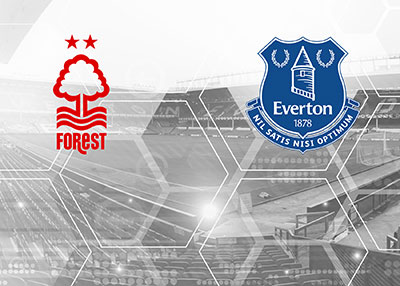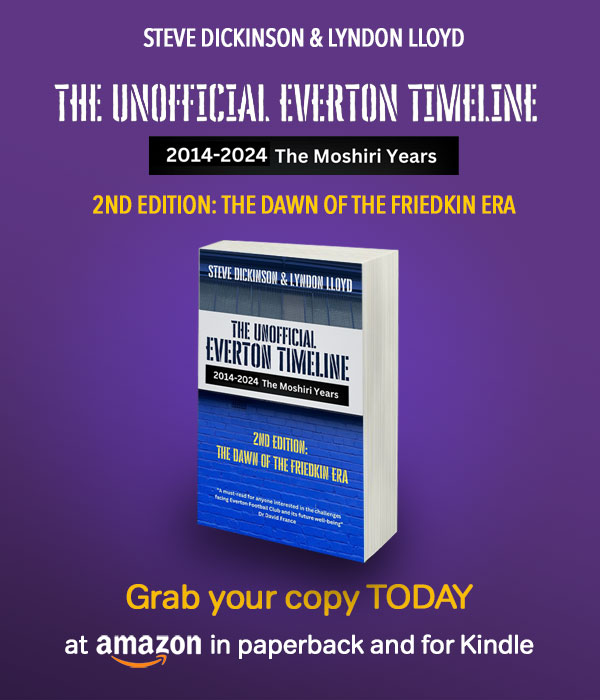Not much was known about our very first overseas tour back in May 1905, which saw us head to Austria-Hungary for the first of seven friendly matches on the Continent. Plenty has been written by journalists, historians, and myself on the 1909 South American tour but our first overseas adventure remains largely untold.
Before the big bang of the historic and game-changing 1909 tour of South America, on 13 January 1903, Everton Football Club’s board of directors met at Goodison Park. During the meeting, the board discussed whether the Blues should consider undertaking an overseas tour, the first time this had been raised at a directors' meeting. The board requested that longstanding director William Clayton ascertain the probable costs of such a continental tour but deferred plans until 1905 when they got a telegram from the FA secretary Frederick Wall.
It was the influence of Hugo Meisl, one of the key figures in the early days of Austrian football, that enabled us to embark on the ground-breaking tour in 1905, as we headed overseas for the first time in our history. Meisl worked closely with FA secretary Frederick Wall to secure an Austro-Hungarian tour for ourselves and Tottenham Hotspur, regarded as two of England’s finest sides at the time.
The Toffees had just finished as Division One runners-up, and Tottenham had been a strong Southern League team with their 1901 FA Cup success still fresh in the memory. Both clubs received a sum of £600 for the trip, which consisted of us playing five matches each against the Austro-Hungarian teams as well as two prestigious matches against each other. In the Everton minute books on 24 January 1905, it was agreed that the Club would go on the European tour.
Following his brief playing career with Vienna Cricket and Football Club (known as Cricketer), Meisl took up a role within the Austrian FA and was instrumental in persuading the English FA to tour the region in 1908 after the success of the Everton tour. In 1919, Meisl took charge of the Austrian national side, and he oversaw together with English coach Jimmy Hogan their rise to prominence in the late 1920s and early '30s.
So impressive was his side that they were dubbed the ‘Wunderteam’ and were among the favourites for the 1934 World Cup; sadly they lost to Cup winners Italy in the semi-finals. Hogan himself had a rather strange Everton connection as he worked in a Walkers tobacco factory in the Everton district of Liverpool during his time out of the game. If only the Blues had realised one of the greatest coaches in the history of football was under their noses and was looking for work!
Football was still relatively new in Austria-Hungary at the time of the Blues' visit and several English teams had visited, namely Oxford University, Southampton, Corinthians, and Casuals but it would be Everton that would be the first professional team from the Football League.
The first match on the trip would be against the combined Budapesti TC and Magyar AC team in Budapest and the Hungarian press were expecting annihilation by the Blues but were nevertheless relishing looking forward to a club of Everton’s ability and reputation playing in their country.
The match took place at what is now known as the Millenaris Sporttelep, which was Magyar AC’s home ground. The opposition had included a few Hungarian internationals, such as Gaspar Borbas, Ferenc Blaszek, and Arpad Kisfaludy; however, right from the kick-off, Everton ran rampant, goals from Tommy McDermott (4), Sandy Young (3), Jimmy Settle (2) and Jack Taylor (2) were enough as Everton won 11-2.
When the final whistle was blown, despite the heavy defeat, the Hungarian crowd cheered their footballing heroes. Even though they conceded 11 goals, the Hungarian press praised the team for scoring 2 goals and said “Those were the only important goals of the game because they were against a team of great stature and standing”.
Next up, Everton would be Vienna-bound, as they took on the team First Vienna FC. The home side, based in the Döbling district of the city, was established in August 1894 and is Austria’s oldest team still in existence, which has played a notable role in the early history of the game in the county.
Football fever had certainly gripped the city and there was a real enthusiasm for the visit of the English team. Again, Everton ran rampant and triumphed 4-0 with goals from Tommy McDermott, Jimmy Settle, and a brace from Sandy Young.
Two days, later Everton would take on an Austrian XI at the same venue; again, Everton would score four with a brace a piece from Sandy Young and Walter Abbot as the Blues won 4-2. The local press said ”Everton have ball technicians of the first order, they always know how to control it and direct it to get where they want it to go and the action of every single player moves within measured limits”.
Next would see the travelling companions Everton and Tottenham Hotspur meet in an all-English clash. While the Viennese public were happy to see their own local teams test themselves against prestigious English opponents, it was the all-English clash they were most looking forward to and it wasn’t just in Austria that excitement reached fever pitch for the fixture. The Hungarian football community was equally as interested, to such an extent that the then Hungarian national team manager, Ferenc Stobbe, helped to organise a special train to take Hungarian fans from Budapest to Vienna for the match.
The local newspaper Neuer Wiener Tagblatt heavily promoted the matches played by both English teams and its sports editor even donated a trophy, named the NWT Cup, for the winners of our clash with Tottenham. Like in 1909, Everton were breaking new ground, being the first time two English sides had ever met on the continent.
The match itself drew an impressive crowd, with an attendance figure somewhere between 7-10,000 which broke all previous attendance records in Austria. The Blues were the better of the sides and, in the 41st minute, Harold Hardman set up Jimmy Settle for the opening goal. Victory was wrapped up in the 76th minute after Sandy Young scored as Everton ran out 2-0 winners.
After the match, a banquet took place in a Vienna casino for the directors and players of both English teams, as well as board members of First Vienna FC and their players. During the event, Everton were presented with their newly won NWT Cup, while a final line in a newspaper report of the evening said: “The banquet took a very animated course”, which suggested a fun night was had by the teams!
After their cup win, Everton moved on to Prague where they first met Sparta Prague, with the Toffees running out 6-3 winners. Sadly, the names of the goal scorers have been lost in the mists of time. A few days later it would be Slavia Prague’s turn to feel the sword as the Blues ran out 5-0 winners with goals from Walter Abbott, Jimmy Settle, Sandy Young (2), and an own goal.
In truth, Everton brushed both sides away with ease, which is fascinating considering both teams were supposedly considered unbeatable on the continent by the local press. Everton would play their final match in Prague and the tour itself with a rematch against Spurs, a 1-0 win would be enough for Everton to go unbeaten on the tour with 7 matches played and 33 goals scored.
The tour itself was thought to be a resounding success by the locals and the Everton board. Just a few weeks later, Austria joined FIFA with their appetite for the game and success that came with it, echoing the feelings Argentina and Uruguay had in 1909 after the South American tour, which goes to show the influence Everton has had on the great sides of Austria, Argentina and Uruguay.
The Blues would go into the 1905-06 season showing why they were chosen to go on their European adventure, by picking up their first-ever FA Cup win against Newcastle United with star of the tour, Sandy Young, scoring the only goal of the game.
Just four years later, Everton and Spurs would answer the call of FA secretary Frederick Wall again, this time it would be the famous and ground-breaking tour of South America that awaited the pioneers of football in foreign lands, but that is another story…
Words by Jimmy Milner
Reader Comments (11)
Note: the following content is not moderated or vetted by the site owners at the time of submission. Comments are the responsibility of the poster. Disclaimer ()
2 Posted 16/05/2023 at 16:01:47
I believe we also won a cup or trophy in Ireland beating, I think, Lindfield but not sure of the date.
3 Posted 16/05/2023 at 16:26:02
Alan (2), I think we won a trophy in the thirties (?) in Spain, The Barcelona Cup.
4 Posted 16/05/2023 at 20:15:49
5 Posted 16/05/2023 at 20:44:21
I misread a line in the second paragraph though; 'The board requested that longstanding director William Ke-'
Aaah, stop it!
6 Posted 16/05/2023 at 21:04:20
We need to ask Paul Wharton for a photo of the programme from First Vienna which he picked up a few years back during his own investigative trip into the Tour,
7 Posted 17/05/2023 at 06:14:52
8 Posted 17/05/2023 at 07:42:06
9 Posted 18/05/2023 at 17:21:57
10 Posted 18/05/2023 at 17:52:18
11 Posted 18/05/2023 at 18:03:49
"Young was convicted of the manslaughter of his brother in Australia in June 1916 and sentenced to three years' imprisonment. At times it was rumoured that he was hanged for sheep-rustling in Australia. Young, who was considered mentally unstable, died in an Edinburgh asylum on 17 September 1959 and is buried in Seafield Cemetery between Leith and Portobello."
Was sheep rustling even a hanging offence in those days?
Add Your Comments
In order to post a comment, you need to be logged in as a registered user of the site.
Or Sign up as a ToffeeWeb Member — it's free, takes just a few minutes and will allow you to post your comments on articles and Talking Points submissions across the site.
How to get rid of these ads and support TW












1 Posted 16/05/2023 at 15:20:26
I thought there had to be some coverage of the tour in newspapers of the period and decided this might be a good test of my new subscription to the Britsh Newspaper Archive to try and fill in the missing scorers against Sparta Prague. Wrong!
You have by far a load more information in this piece than I could find. I won't ask you to reveal your sources!
Nice work.